61 F. high on Easter Sunday in the Twin Cities.
54 F. average high on April 8.
64 F. high temperature on April 8, 2011.
Freeze Watch posted for the Twin Cities and all of central and southern Minnesota for late Monday night.
134" of snow at Anchorage, Alaska - snowiest winter in 60 years. Details from The Washington Post below.
 Freeze Watch
Freeze Watch. Here we go - we've been talking about this cold front for about 2 weeks now, and it's still inevitable. A frost is likely - I'm more concerned about a "freeze", defined as 3-4 or more hours colder than 28 F, cold enough to kill off a significant amount of plant life. I think the close-in suburbs may avoid a freeze, but a frost is likely tonight, again Tuesday night - if you have some tender flowers you want to keep around awhile longer cover them up with newspaper (or mulch?) Conditions improve by Thursday morning.
Details from the MSP office of the NWS:
...WIDESPREAD FREEZING TEMPERATURES POSSIBLE MONDAY NIGHT...
.COOL CANADIAN HIGH PRESSURE WILL BEGIN SETTLING SOUTH INTO THE
REGION ON MONDAY... MAKING FOR A COLD NIGHT MONDAY NIGHT. WINDS
WILL NOT DROP OFF ENTIRELY MONDAY NIGHT... BUT COLD AIR POURING IN
FROM THE NORTH WILL STILL PUSH TEMPERATURES DOWN INTO THE 20S
ACROSS THE AREA. SOME LOCATIONS NORTH OF A MORRIS TO LADYSMITH
LINE COULD SEE READINGS DROP TO AROUND 20 DEGREES BEFORE DAYBREAK
TUESDAY. NOT ONLY MAY TEMPERATURES BE WELL BELOW FREEZING... BUT
THE BELOW FREEZING READINGS MAY LAST FOR A FEW HOURS... WHICH
COULD BE PARTICULARLY DETRIMENTAL TO TENDER VEGETATION AND FRUIT
TREES WHICH ARE BUDDING IN SOME AREAS.
Tuesday Morning Lows. Here are predicted temperatures for late tonight, which will probably be the coldest night of the entire week, statewide. A frost is likely in the close-in suburbs (Robbinsdale, St. Anthony Main, Richfield and Fridley), but a hard freeze is possible in outlying suburbs. Map courtesy of
NOAA.
"
Climate change means that we have to think about the consequences of every single thing that we do in our fossil-fuel powered lives. It requires fundamental reassessments of how we live our lives. That’s not easy to do. It’s not surprising that many people would just rather wish the problem away." - from an essay on the gradual "conversion" of a climate skeptic at Legal Planet below.
Tulip Alert. Yes, the rumors are true - some of your favorite flowers and shrubs may freeze their buds off within 48 hours. Details on a frost - and possible freeze - below. Yes, those are my tulips - they're nervous.
 A Freeze....and 70 In The Same Week?
A Freeze....and 70 In The Same Week? A frost/freeze is likely the next 2 nights, but a quick rebound is likely the latter half of this week; a few models hinting at highs in the 60s to near 70 by Friday and Saturday.
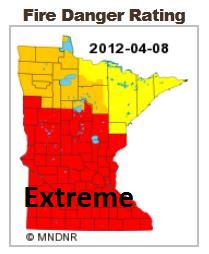 Extreme Fire Danger
Extreme Fire Danger. According to the
Minnesota DNR an "extreme" fire danger exists across all of central and southern Minnesota. Here is what an extreme fire danger means:
"The fire situation is explosive and can result in extensive property damage". Fires under extreme conditions start quickly, spread furiously, and burn intensely. All fires are potentially serious. Development into high-intensity burning will usually be faster and occur from smaller fires than in the very high danger class. Direct attack is rarely possible, and may be dangerous, except immediately after ignition. Fires burning in heavy slash or in conifer stands may be unmanageable while the extreme burning condition lasts. Under these conditions, the only effective and safe control action is on the flanks until the weather changes or the fuel supply lessens.
 Temperature Roller Coaster.
Temperature Roller Coaster. The GFS is printing out another frost/freeze the middle of next week, followed by 60s, even 70 the weekend of April 21-22. Showers and T-storms are possible early next week, another outbreak of showers and T-storms around the 22nd of April. Circle your calendars. I'm still worried about the drought.
Spring Prompts Storm Preparedness. Here's a timely story from
The Dispatch: "
We do not have any public storm shelters to speak of in the county," Lawrence said. "All of our storm shelters are individually owned. I wish we had a shelter system for the public. But we don't have the funds for it and we do not qualify for grants, because we did not receive any damage in 2011. We didn't take advantage of any grant money after the January 10, 2008 tornado in Caledonia." Lawrence said the average individual shelter cost between $3,000-$4,500 and not all of the shelters were built below ground." Photo credit: AP.
Real-Life Storm Stories And How To Be Prepared. Some good advice from Tara Hastings at
WDTN.com: "
I recently attended a severe storms conference in Des Moines put on by the Central Iowa National Weather Association. I was so excited to hear about new technology, severe weather case studies and just be around other “weather geeks.” Some of the presentations were heavy with meteorological jargon while others shared first hand experience of surviving a tornado and dealing with its aftermath. Jeff Piotrowski is a storm chaser with TwisterChasers.com He has been chasing for more than 30 years but all that knowledge couldn’t have prepared him for what he was about to see on May 22, 2011 in Joplin, MO. He was chasing and calling back vital information while the EF-5 ripped through the city. Instead of continuing to chase the tornado, or look at the footage he just captured he stopped and turned around. Driving down a battered street Jeff got out of his truck and started helping those who were crying for help. His wife used his truck to pull large trees and debris from the road so emergency personnel could get through the street. They both spent three and a half hours helping people. They saw death and destruction but also saw good Samaritans using pick up trucks full of injured people as ambulances. After his presentation everyone there gave him a well deserving standing ovation."
Man Loses Home In Texas After Losing Home In Hurricane Katrina. Talk about the definition of bad luck. Denver's
9news.com has the story - here's an excerpt: "
DALLAS - One man in Texas knows the pain of losing a home to Mother Nature all too well. Michael Lynch used to live in New Orleans. He lost everything to Hurricane Katrina back in 2005. He and his family moved to Texas, rebuilt and settled down in the town of Forney. His 3-year-old home was torn apart by a powerful E-F-3 tornado earlier this week. Although Lynch was glad no one died in the storm system, he can't believe he's lost his home not once, but twice."
2011 Mississippi River Flood Recovery Is Still Under Way. One year after record flooding many families are still suffering, according to
nola.com: "
The levees held. But that doesn't mean the record Mississippi River flood of 2011 didn't leave destruction in its wake. As hundreds of Mississippi residents struggle to get back into homes and casinos say business is still down, the Army Corps of Engineers is reinforcing damaged levees as another flood season approaches. Cody Newsom lived in a fishing camp in Tunica Cutoff when the water came last spring. Now, he lives in a federally provided trailer miles from the water. But he and some buddies returned one afternoon last month to the cutoff, on the unprotected side of the main river levee, to go boating on the oxbow of Tunica Lake."
Photo credit above: "
Rogelio V. Solis, The Associated Press. This house in the Kings community of Vicksburg, Miss., was photographed March 27, still in need of repair from last year's record Mississippi River flooding."
With 134" Snow, Alaska's Largest City Breaks Seasonal Record Set Nearly 60 Year Ago. Yes, Alaska saw a real winter, as reported by
The Washington Post: "
ANCHORAGE, Alaska — A spring snowfall has broken the nearly 60-year-old seasonal snow record of Alaska’s largest city. Inundated with nearly double the snow they’re used to, Anchorage residents have been expecting to see this season’s snowfall surpass the record of 132.6 inches set in the winter of 1954-55. The 3.4 inches that fell by Saturday afternoon brings the total to 133.6 inches. National Weather Service meteorologist Shaun Baines said forecasters don’t expect more than an inch of additional accumulation. Before a dumping of wet snow Friday, none had fallen since mid-March, and the seasonal measure hovered at 129.4 inches, or nearly 11 feet."
Photo credit above: "
Snow falls in downtown Anchorage, Alaska, Saturday, April 7, 2012. (AP Photo/The Anchorage Daily News, Bob Hallinen)."
Modern Thermometers. Here's an excerpt of a fascinating read in
The Wall Street Journal: "
My print column examines all the aspects of weather, and people’s experience of it, that aren’t covered by air-temperature readings alone. The wind, sun and humidity all exert influence. So do people’s clothing, surroundings and other personal characteristics. “The ‘experience’ of temperature is quite subjective,” said Mark D. Schwartz, chair of the geography department at the University of Wisconsin-Milwaukee. “Everybody experiences it differently,” Paul Walker, senior meteorologist at Accuweather, said of the weather. “Some people can tolerate heat a lot more than other people.” Maurice Bluestein, an engineering professor at Indiana University-Purdue University at Indianapolis, ticked off the factors to consider: “There are the meteorological factors: humidity, wind speed and direction, air pressure, sunlight and its direction, and cloudiness."
Study Ties Oil, Gas Production To Midwest Earthquakes. Details from
Fox News: "
Oil and gas production may explain a sharp increase in small earthquakes in the nation's midsection, a new study from the U.S. Geological Survey suggests. The rate has jumped six-fold from the late 20th century through last year, the team reports, and the changes are "almost certainly man-made." Outside experts were split in their opinions about the report, which is not yet published but is due to be presented at a meeting later this month."
Photo credit above: "March 21, 2012: Oil rig located on federal lands outside of Maljamar, N.M." Reuters.

 A Blue-Sky Easter 2012.
A Blue-Sky Easter 2012. Yes, it was breezy out there, but at least the sun was out (considerably nicer than Saturday was). Highs ranged from 53 at International Falls to 61 St. Cloud and the Twin Cities, 64 at Redwood Falls. .09" rain fell at Grand Marais, a trace of sprinkles reported at Hibbing.
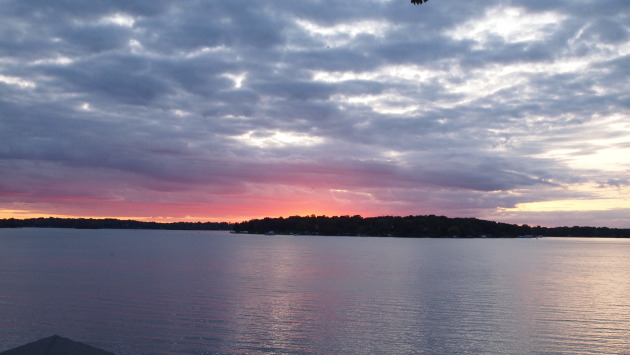 Paul's Conservation Minnesota Outlook for the Twin Cities and all of Minnesota:
Paul's Conservation Minnesota Outlook for the Twin Cities and all of Minnesota:
TODAY: Sunny, cool, stiff breeze. NW 15-30. High: 47
MONDAY NIGHT: Freeze watch. Clear and cold with a freeze possible in the suburbs. Low: 28
TUESDAY: AM frost/freeze. Bright sun - still brisk. Slightly less wind. High: 46
WEDNESDAY: More frost possible. Blue sky, less wind. Low: 30. High: near 50
THURSDAY: Clouds increase, frost-free. Showers possible late. Low: 39. High: 59
FRIDAY: Chance of showers, risk of a few T-showers. Low: 46. High: 60
SATURDAY: Some sun, milder - chance of a late T-storm? Winds: SE 10. Low: 49. High: 66
SUNDAY: Mild, few strong/severe storms possible. Low: 53. High: 71

Fire and Ice
What odd weather we're having. 22 inches of snow? I think I used my heavy coat twice all "winter". 3 nights below zero; average is 28. Shh. Word musn't get out. KARE-11 will be tracking an invasion force of newcomers streaming up I-35 and I-94; refugees heading for a kinder, gentler Minnesota.
"Paul, break the tablet in half!" This year's freak show: no snow, Maylike March, nagging drought and now, a high risk of fire, will eventually revert back to normal. How I long for normal.
Low humidity, strong winds and bright sun have created tinder-dry conditions. "Red Flag Warnings" are usually found out west, but until we get a few good soakings be extra careful with your (cigarette) butts. I worry about boating season and dinged-up props. "Any rain that falls the soil has first mortgage on the rain; we would need a surplus to start filling lakes" said Pete Boulay at the MN Climate Office Friday. Showers arrive Friday; maybe a few strong/severe T-storms Sunday as highs approach 70.
But first comes a long-overdue temperature tumble. Hardly an Arctic Outbreak, but you'll need a jacket. The best chance of a frost or freeze? Tuesday and Wednesday morning.
Your flowers are nervous.
Climate Stories...
"Believing In Climate Change". Here's an interesting chronology of a climate skeptic and why he came to "believe" a steady accumulation of evidence that pointed toward a warming atmosphere, as reported at
Legal Planet: "
For many years, I didn’t really believe in climate change. Not in the sense of skeptics or deniers. It’s not like I didn’t intellectually understand the science behind climate change, and didn’t understand in my head that greenhouse gases were contributing to significant alterations in global climate systems, and that those alterations have the potential to produce tremendous negative impacts on human and natural systems. Instead, the very concept of climate change was so overwhelming that I just didn’t want to deal with it. One of the reasons I focused my career on environmental law and policy was a passionate interest in endangered species and conservation biology. Climate change might result in the extinction of thousands upon thousands of species. That prospect – and the difficulty of doing anything about it – was just too daunting to consider."
The Other Arab Spring.
The New York Time's (subscription may be required) Thomas Friedman has an Op-Ed examining the role of a changing climate in the Middle East, and how shifting rainfall/drought patterns may be having an impact on developments nearly half a world away. Here's an excerpt: "From 2006-11, they note, up to 60 percent of Syria’s land experienced one of the worst droughts and most severe set of crop failures in its history. “
....According to a special case study from last year’s Global Assessment Report on Disaster Risk Reduction, of the most vulnerable Syrians dependent on agriculture, particularly in the northeast governorate of Hassakeh (but also in the south), ‘nearly 75 percent ... suffered total crop failure.’ Herders in the northeast lost around 85 percent of their livestock, affecting 1.3 million people.” The United Nations reported that more than 800,000 Syrians had their livelihoods wiped out by these droughts, and many were forced to move to the cities to find work — adding to the burdens of already incompetent government. “If climate projections stay on their current path, the drought situation in North Africa and the Middle East is going to get progressively worse, and you will end up witnessing cycle after cycle of instability that may be the impetus for future authoritarian responses,” argues Femia."
Map credit above: "
NOAA concluded in 2011 that “human-caused climate change [is now] a major factor in more frequent Mediterranean droughts.” Reds and oranges highlight lands around the Mediterranean that experienced significantly drier winters during 1971-2010 than the comparison period of 1902-2010." Courtesy of
Think Progress.
Warm Up To Idea of Climate Change, Mr. Santorum. Here's an excerpt of an Op-Ed at
TimesDaily.com: "
....Men in top hats tend to be in denial about basic things; for example, that this is not the 19th century, and that here in the 21st century something is evidently wrong with the regular climate cycles — and not just in Punxsutawney. While nobody can be certain that the early spring here in the East is a manifestation of global warming, you know the old saying: Something that looks like a groundhog, walks like a groundhog and makes weather forecasts like a groundhog is probably a groundhog that gets his information from talk radio, as filtered through men in top hats. Indeed, the party that looks out for the interests of men in top hats is pretty much united in the belief that global warming is a hoax — in particular, man’s alleged role in it. Pennsylvania’s own Rick Santorum has been in the forefront of such remarks, in the belief that the Republican primaries are a competition to say the stupidest things. This strategy has been quite successful for him. While Santorum won’t win, he hopes to parlay his victories into an appointment as Grand Inquisitor in the Romney administration."
* March record daytime highs and warm nighttime lows (nearly 14,000) courtesy of NOAA and
Ham Weather.

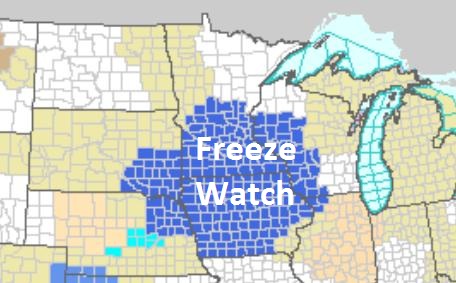
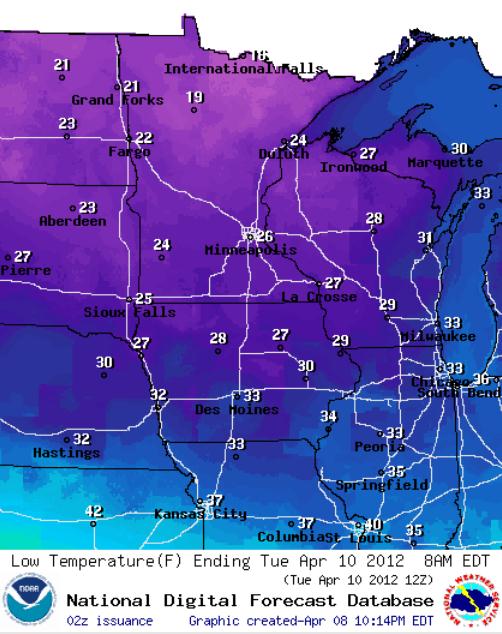





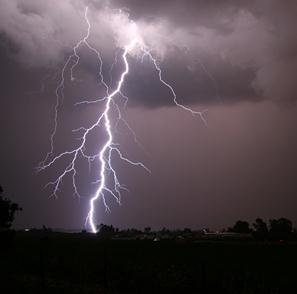
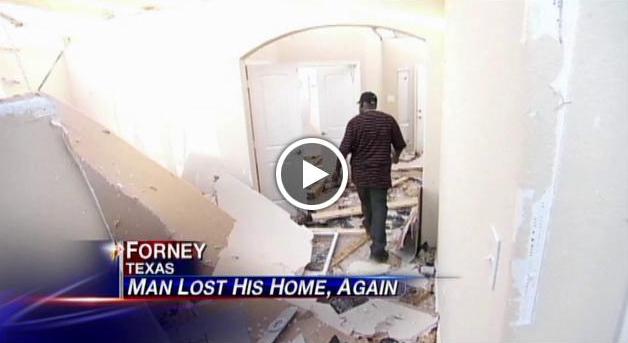
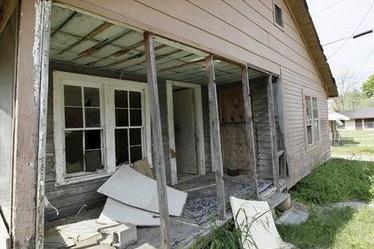








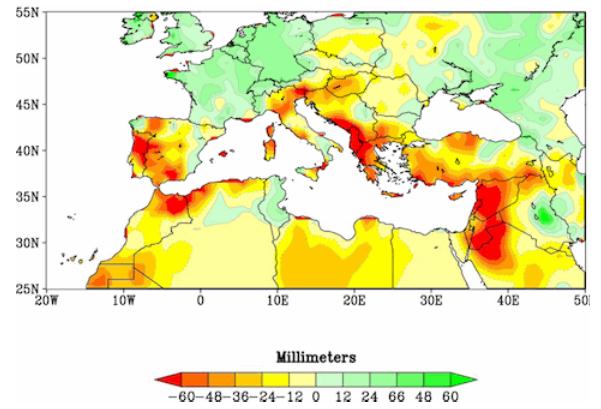
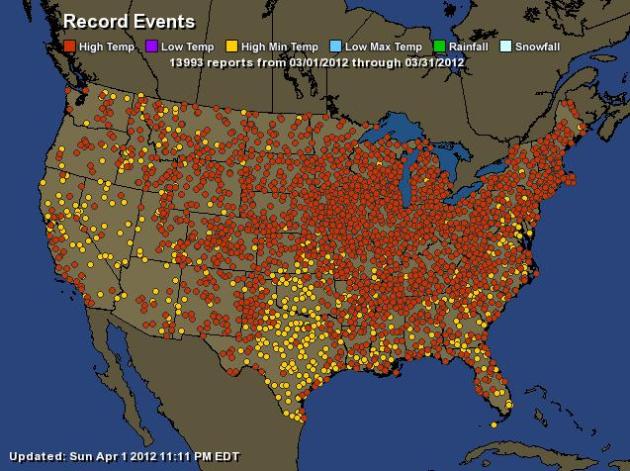
No comments:
Post a Comment